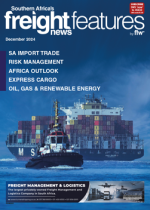The changing landscape of energy supply in South Africa presents opportunities for logistics managers who are finding new customers, as traditional income streams dry up.Refinery closures and operational stoppages have resulted in a significant reduction in South Africa's petroleum refining capacity in recent years, forcing the industry to turn to imports to satisfy the growing demand.As of 2023, imports accounted for 61% of the country’s petroleum needs, a major jump from 22% just a few years before.“Fuel products are subject to stringent regulatory statutes and administrative regulations, which calls for rigorous compliance. Turners Shipping has developed a web-based system which automates the process, generating the necessary documents required by Sars.” says Gregory Marks, national business development and transformation manager at Turners Shipping.Presently, South Africa imports all types of fuel, including diesel, petrol, jet fuel, liquefied petroleum gas, illuminating paraffin and fuel oil. Imports come from several countries, with the UAE and India being the largest suppliers.“All are subject to customs and excise duties, fuel and road accident fund levy, and, in certain instances, value-added tax. This requires a specific skill set, as calculating the duties and the submission of documentation can be challenging.”Government policy is placing increased emphasis on renewable energy sources, and this, says Marks, is opening opportunities in the forwarding and logistics industries.“Luckily for us, South Africa is both sunny and windy, and we are looking to harness the abundant solar and wind resources.”Solar has seen remarkable growth in recent years, particularly in the business and domestic sectors, as home and business owners find solutions to mitigate the rolling blackouts which have been part of life in South Africa.“While there are a couple of solar panel manufacturers in the country, the bulk of the hardware is imported, mainly from China,” explains Marks.“Similarly, just about all the equipment for wind turbines is imported, and components like blades and towers require specialist transport from ports to the remote locations where they are installed. Their size presents logistical challenges, requiring specialised transport vehicles, planning and permits, and careful coordination to ensure delays are kept to a minimum.”LV

